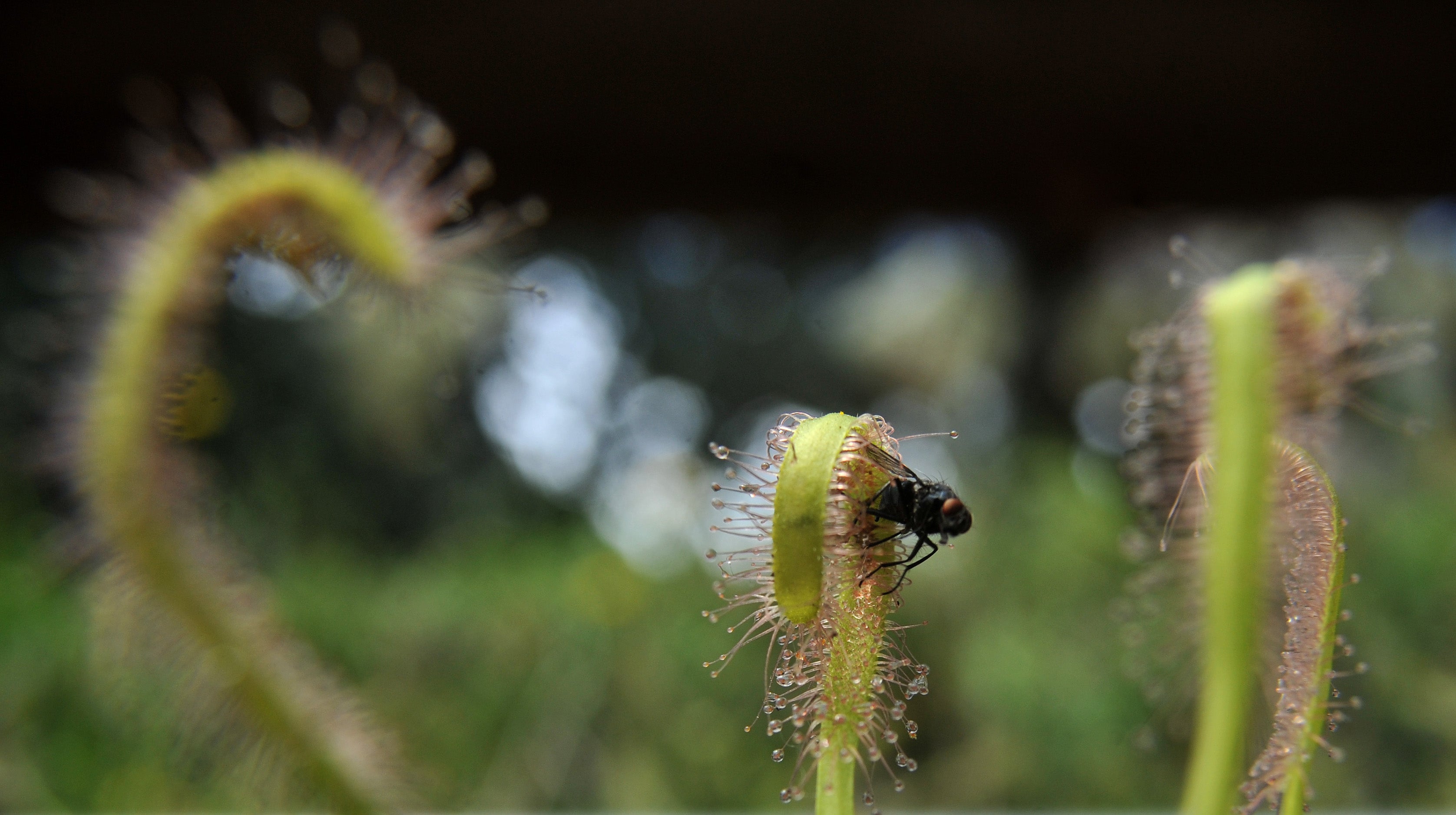Scientists discover common North American plant to be part-time insect eater
The western false asphodel traps insects only during its flowering season

Your support helps us to tell the story
From reproductive rights to climate change to Big Tech, The Independent is on the ground when the story is developing. Whether it's investigating the financials of Elon Musk's pro-Trump PAC or producing our latest documentary, 'The A Word', which shines a light on the American women fighting for reproductive rights, we know how important it is to parse out the facts from the messaging.
At such a critical moment in US history, we need reporters on the ground. Your donation allows us to keep sending journalists to speak to both sides of the story.
The Independent is trusted by Americans across the entire political spectrum. And unlike many other quality news outlets, we choose not to lock Americans out of our reporting and analysis with paywalls. We believe quality journalism should be available to everyone, paid for by those who can afford it.
Your support makes all the difference.A common plant that grows in the bogs of the North American west coast, including in parts of California and Alaska, is actually a part-time carnivore that ensnares and digests insects during its flowering season, according to a new study.
The western false asphodel, or Triantha occidentalis, gets up to 64 per cent of its nitrogen requirements from insects, but unlike full-time predators like the Venus fly trap and the pitcher plant, it does so only when it’s flowering, said the research.
Questions have, thus, been raised about the prevalence of part-time carnivorous behaviour in other species by the study, published in the journal PNAS.
It also calls into question the independent adaptation of insect-eating traits in plants across different lineages.
“What’s particularly unique about this carnivorous plant is that it traps insects near its insect-pollinated flowers. On the surface, this seems like a conflict between carnivory and pollination because you don’t want to kill the insects that are helping you reproduce,” study lead author Qianshi Lin said in a statement.
The plant, however, can sort out friendly pollinating insects from those it can prey on, believe researchers, including those from the University of British Columbia in Canada.
Small red hair on the upper part of the plant’s flowering stalk secrete a sticky substance that often traps flies and small beetles in the droplets, while larger insects are spared.
“We believe that T occidentalis is able to do this because its glandular hairs are not very sticky, and can only entrap midges and other small insects, so that the much larger and stronger bees and butterflies that act as its pollinators are not captured,” Tom Givnish, a professor of botany at the University of Wisconsin-Madison in the US and co-author of the research, pointed out.
The scientists noted both the environment as well as genetics may have allowed the plant to adapt to an insectivorous diet.
They explained that a carnivorous lifestyle is energy intensive for plants, requiring plenty of water and sunlight. Researchers pointed out that T occidentalis also lost a gene often missing in carnivores.
“Only in habitats in which nutrients and nutrients alone are limiting, would you expect carnivory to be an advantage,” Dr Givnish said, adding that insects can be excellent sources of nutrients the soil lacks, including nitrogen and phosphorus.
In the research, the scientists labeled frozen fruit flies with forms of nitrogen that could be tracked and added insects to 10 individual T occidentalis plants in a bog.
As a control group, they also added frozen flies to a similar-size plant that is not carnivorous.
They found that T occidentalis acquired more than half of its nitrogen nutrients from the insects, similar to known carnivorous plants and far above the level absorbed incidentally by non-carnivorous plants.
The researchers said they could detect the nitrogen isotope in the stems, leaves and fruits of the plant, but not in the non-carnivorous plants in the control group.
While some carnivorous plants rely on microbes to initially digest prey in pools of water before soaking up the leftovers, researchers found that T occidentalis produced a type of enzyme called phosphatase that can break down phosphorous-bearing nutrients in its prey.
“Given the existence of T occidentalis in close proximity to major urban centres on the Pacific coast, our study serves as a vivid reminder that other cryptic carnivores may yet remain to be discovered,” the scientists wrote in the study.
Join our commenting forum
Join thought-provoking conversations, follow other Independent readers and see their replies
Comments